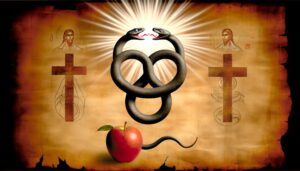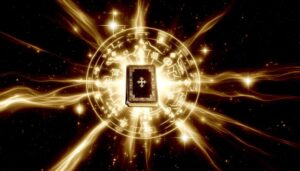Telestial Meaning In The Bible: Kingdom of Glory
The term ‘telestial‘ is specific to Latter-day Saint theology and refers to the lowest of three degrees of glory in the afterlife, detailed in Doctrine and Covenants Section 76 revealed by Joseph Smith. Unlike traditional Christian eschatology that often simplifies the afterlife into heaven and hell, the telestial kingdom represents a unique theological layer for those who did not accept the gospel during their earthly lives but are not eternally damned.
It subtly mirrors the Apostle Paul’s reference to differing glories in 1 Corinthians 15:40-42. Explore further to see how telestial existence fits into a broader theological narrative.

Telestial Meaning in the Bible: Understanding the Lowest Kingdom of Glory
| Concept | Meaning & Symbolism | Scriptural & Etymological Insights |
|---|---|---|
| Telestial Kingdom | The lowest of the three heavenly kingdoms in LDS belief | Mentioned in Doctrine & Covenants 76 and 88; compared to the “glory of the stars,” suggesting lesser glory (churchofjesuschrist.org) |
| Reserved for the sinful | For those who rejected the gospel, led immoral lives, and didn’t repent | Inherits glory after final resurrection but cannot dwell in God’s presence |
| Order and timing | Last group to be resurrected, after the millennial reign of Christ | Called the “last resurrection”; resurrection of the telestial follows the celestial and terrestrial |
| Etymology — “telos” | Greek root meaning “end,” “completion,” or “final” | Indicates this kingdom as the final resurrection or “end kingdom” |
| Etymology — “tele” | Alternatively from Greek “tele,” meaning “far off” or “distant” | Implies distance from God’s presence; i.e., the farthest kingdom |
| Latin neologism | Term “telestial” was coined by Joseph Smith in 1832, modeled on “celestial”/“terrestrial” | First appears in LDS scripture in early 1832; a coined adjective formed alongside older Latin-rooted terms |
Origins of the Term
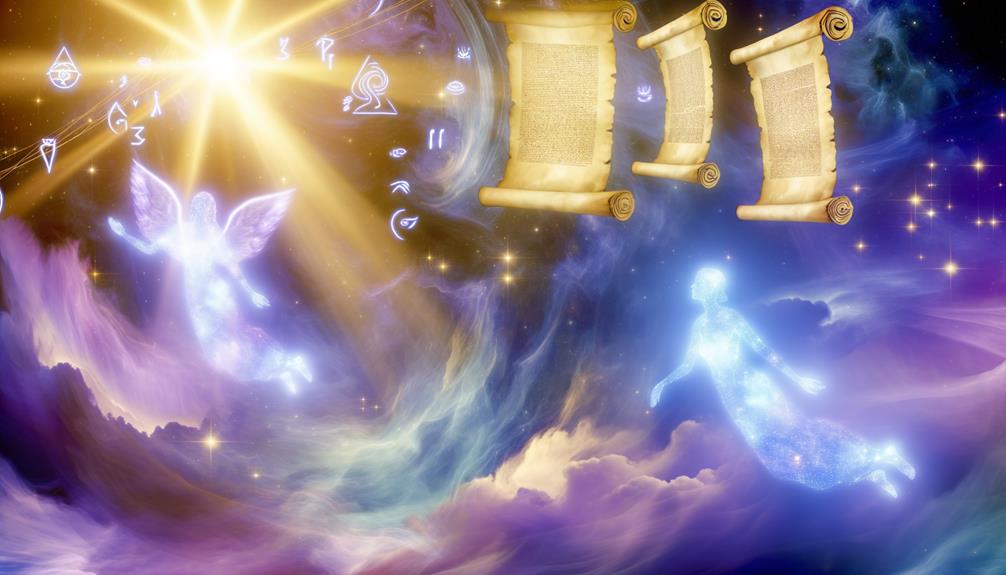
Although the term ‘telestial’ does not appear directly in the canonical texts of the Bible, its origin can be traced to Latter-day Saint theology, where it is used to describe one of the three degrees of glory in the afterlife.
The etymology of ‘telestial’ appears to be a unique coinage within this religious tradition, reflecting a hierarchical framework of celestial, terrestrial, and telestial kingdoms.
Theologically, the telestial kingdom represents the lowest degree of glory, reserved for those who did not accept the gospel of Jesus Christ but are still redeemed by His grace after their earthly life.
This tripartite model offers an eschatological landscape that contrasts with mainstream Christian eschatology, which traditionally dichotomizes the afterlife into heaven and hell.
Joseph Smith’s Revelation
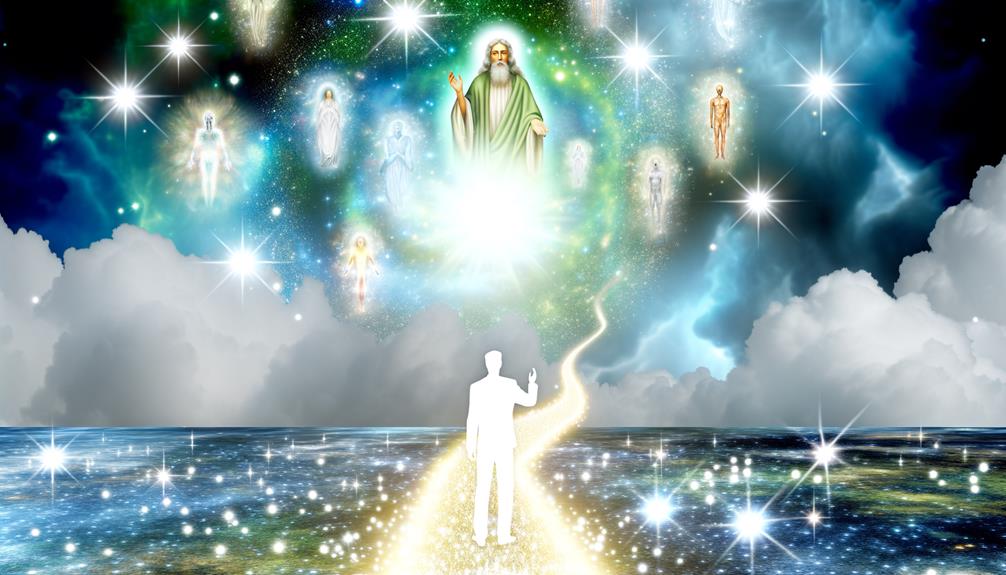
Joseph Smith’s Revelation, particularly as documented in Doctrine and Covenants Section 76, provides a profound vision of the afterlife, introducing the concept of the three degrees of glory: Celestial, Terrestrial, and Telestial kingdoms.
This revelatory framework reinterprets traditional Christian eschatology by elucidating distinct levels of salvation and post-mortal existence.
Smith’s vision underscores the Telestial kingdom as a unique domain for those who did not receive the Gospel in mortal life but are nonetheless resurrected to a lesser degree of glory.
Vision of the Kingdoms
How does Joseph Smith’s profound revelation on the Vision of the Kingdoms elucidate the hierarchical nature of the afterlife as described in Mormon theology?
Smith’s vision, documented in Doctrine and Covenants 76, presents a tripartite structure of the afterlife, delineating three distinct kingdoms. This hierarchical framework underscores the varying degrees of glory and divine proximity achievable by souls based on their earthly choices and righteousness.
- Celestial Kingdom: Reserved for the most faithful followers who accept Jesus Christ and live righteously.
- Terrestrial Kingdom: For honorable individuals who rejected the gospel in life but later accepted it in the afterlife.
- Telestial Kingdom: Inhabited by those who led sinful lives and did not repent.
This visionary framework profoundly shapes Mormon soteriology and eschatology.
Degrees of Glory
The Degrees of Glory, as revealed in Joseph Smith’s Doctrine and Covenants 76, provide a nuanced understanding of the afterlife that intricately categorizes souls based on their earthly actions and spiritual commitments.
This revelation delineates three distinct kingdoms: the Celestial, Terrestrial, and Telestial. Each represents varying levels of divine glory. The Celestial Kingdom is reserved for those who have fully embraced the gospel and lived in accordance with its precepts.
The Terrestrial Kingdom is for honorable individuals who did not fully accept the gospel but lived morally upright lives. Finally, the Telestial Kingdom houses souls who were neither valiant nor honorable.
This stratification underscores the theological principle of divine justice, offering tailored recompense based on individual mortal experiences.
Afterlife and Salvation
Building upon the framework of the Degrees of Glory, Joseph Smith’s revelation further elucidates the intricacies of the afterlife and the pathways to salvation, emphasizing divine justice and mercy.
This revelation presents a nuanced view of eternal destinies, distinguishing between various degrees of glory and their corresponding requisites for salvation. The Telestial Kingdom, the lowest of the three, provides a place for those who do not accept the gospel in mortality but do not merit eternal damnation.
- Degrees of glory: Celestial, Terrestrial, and Telestial.
- Criteria for salvation: Faith, repentance, and obedience to commandments.
- Role of divine mercy: Allows for post-mortal repentance.
This theological framework underscores the all-encompassing nature of God’s plan for humanity.
Doctrine and Covenants Insights
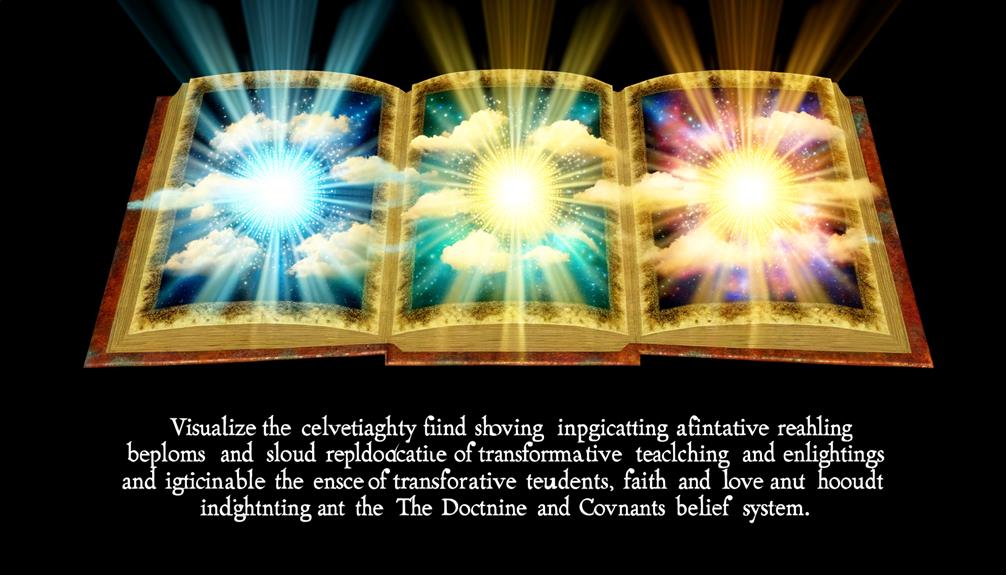
Doctrine and Covenants 76 offers a profound theological framework for understanding the concept of the telestial kingdom within LDS eschatology.
This section, often referred to as ‘The Vision,’ was received by Joseph Smith and Sidney Rigdon in 1832 and delineates the three degrees of glory in the afterlife: celestial, terrestrial, and telestial.
The telestial kingdom is depicted as the lowest of these domains, reserved for those who did not accept the gospel of Jesus Christ in mortality or the post-mortal spirit world.
Its inhabitants are described as those who are ‘thrust down to hell’ but eventually receive a degree of salvation after their period of suffering.
Consequently, Doctrine and Covenants 76 provides an essential doctrinal basis for comprehending the telestial state.
Telestial Kingdom Described

The Telestial Kingdom, as described in the Doctrine and Covenants, represents the lowest of the three degrees of glory, characterized by its distinct lack of divine presence compared to the Celestial and Terrestrial Kingdoms.
Biblical references, though sparse, provide a framework for understanding its attributes, reflecting a state of existence for those who did not receive the gospel of Jesus Christ in mortality.
The spiritual significance of the Telestial Kingdom underscores the principle of divine justice and mercy, offering a nuanced perspective on salvation and eternal progression.
Biblical References Found
Although the term ‘telestial’ is not explicitly found in the Bible, its conceptual underpinnings can be analyzed through various scriptural references that describe different degrees of glory and afterlife spheres.
Biblical passages often delineate a hierarchical structure of the afterlife, which theologians interpret to include a lower kingdom, often associated with the ‘telestial’ concept in Christian eschatology.
Key scriptural references include:
- 1 Corinthians 15:40-42: Different kinds of bodies and glories, implying distinct heavenly realms.
- John 14:2: Jesus speaks of many mansions, suggesting diverse eternal dwellings.
- 2 Corinthians 12:2-4: Paul’s vision of multiple heavens.
These references provide a foundation for understanding the gradations of post-mortal existence.
Kingdom Characteristics Explained
In examining the characteristics of the telestial kingdom, one must consider its theological implications as a sphere of existence that, while glorious, is distinguished by a lesser degree of divine presence and glory compared to the celestial and terrestrial kingdoms.
According to scriptural texts and doctrinal interpretations, the telestial kingdom is inhabited by those who did not receive the gospel of Jesus Christ or accept His atonement in their mortal lives.
These individuals are resurrected and judged according to their works, receiving a measure of glory suited to their earthly deeds.
Unlike the celestial and terrestrial kingdoms, the telestial kingdom is characterized by a more distant relationship with God and Christ, reflecting its position as the lowest tier in the hierarchy of heavenly domains.
Spiritual Significance Discussed
Examining the spiritual significance of the telestial kingdom necessitates an understanding of its unique role within the broader eschatological framework presented in biblical and doctrinal narratives.
This kingdom, often considered the lowest of the three degrees of glory, is reserved for those who did not accept the gospel of Jesus Christ in mortality or the afterlife.
Its spiritual significance can be discerned through several key aspects:
- Justice and Mercy: Reflects the balance of divine justice and mercy.
- Post-Mortal Progression: Offers a state of progression albeit limited compared to higher kingdoms.
- Nature of Glory: Described as a glory surpassing all mortal understanding.
Understanding these elements provides a thorough view of the telestial kingdom’s place in Christian eschatology.
Comparison With Other Kingdoms

Frequently, theological analysis of the Telestial Kingdom is enriched by comparing it with the Celestial and Terrestrial Kingdoms, thereby elucidating its distinct characteristics and spiritual significance within biblical doctrine.
The Celestial Kingdom represents the highest degree of glory, where individuals dwell in God’s presence, embodying ultimate spiritual fulfillment.
The Terrestrial Kingdom, while less exalted, still offers a domain of considerable glory, inhabited by the honorable who did not fully embrace divine commandments.
In contrast, the Telestial Kingdom, the lowest of the three, is reserved for those who did not accept Christ or live according to His teachings.
This comparative framework highlights the varying degrees of spiritual attainment and the profound implications of one’s earthly choices on eternal destiny within Christian theology.
Criteria for Inhabitants
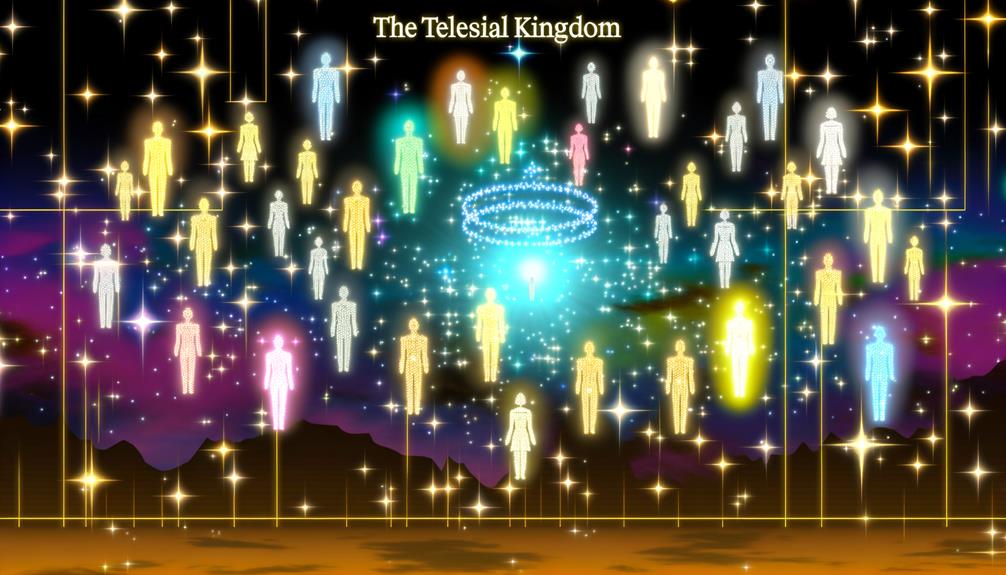
Understanding the criteria for inhabitants of the Telestial Kingdom requires an in-depth examination of biblical passages and theological perspectives that delineate who is deemed unworthy of higher glories.
Those who fall into this category have often failed to meet specific spiritual and moral benchmarks set forth by scripture and religious doctrine.
These individuals typically exhibit characteristics such as:
- Rejection of Christ’s Atonement: They have not accepted Jesus Christ as their Savior.
- Persistence in Sin: They continue in sinful behaviors without repentance.
- Failure to Live Gospel Principles: They neglect the fundamental teachings of Christianity.
Such criteria establish a framework for understanding the moral and spiritual deficiencies attributed to Telestial inhabitants.
Biblical References and Interpretations

A thorough analysis of biblical references reveals that the concept of the Telestial Kingdom, while not directly named in canonical scripture, can be gleaned through theological interpretations of various passages.
For instance, 1 Corinthians 15:40-42 speaks of differing glories in the resurrection: celestial, terrestrial, and another lower domain often interpreted as telestial.
In addition, Revelation 21:8 describes the fate of the unrighteous, implying a lesser glory compared to the celestial.
Theological scholars often link these texts to the tripartite division of the afterlife, suggesting that the telestial domain is reserved for those who did not fully embrace divine principles but are not entirely damned.
These interpretations provide a nuanced understanding of the afterlife’s stratification in Christian eschatology.
Theological Implications
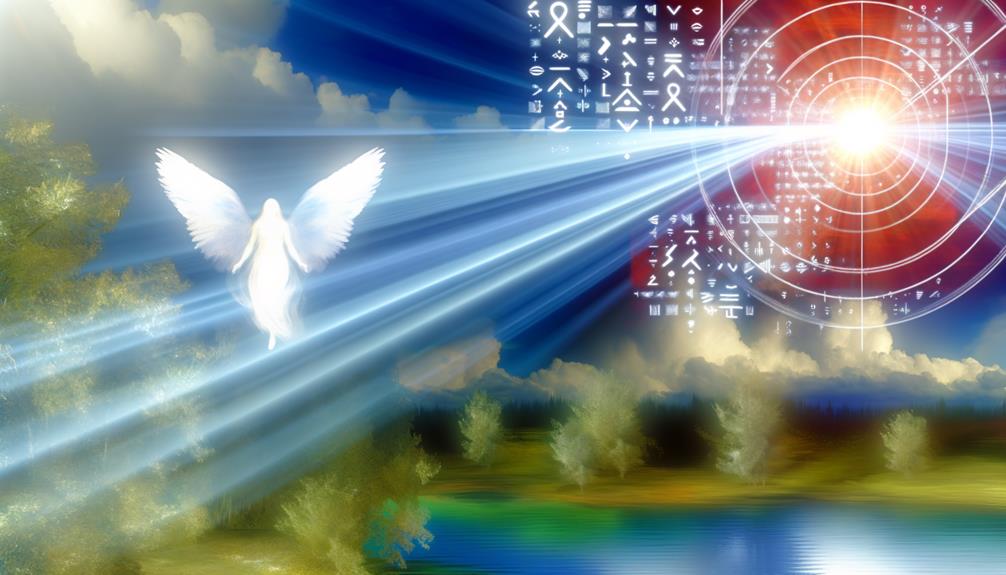
Examining the theological implications of the Telestial Kingdom reveals complex insights into how varying levels of righteousness and adherence to divine principles are perceived within Christian eschatology. This tiered understanding underscores the nuanced nature of salvation and judgment, suggesting that not all souls achieve the same proximity to the divine presence.
The Telestial Kingdom, often seen as a domain for those who led less virtuous lives, highlights key theological principles:
- Degrees of Glory: Different levels of heavenly reward based on earthly righteousness.
- Moral Accountability: Emphasizes the importance of moral decisions and actions.
- Divine Justice and Mercy: Balances God’s justice with His mercy.
Understanding these elements offers a more profound comprehension of divine justice and human destiny.
Telestial Kingdom in Modern Beliefs

The conceptualization of the Telestial Kingdom within contemporary Christian thought reflects an ongoing engagement with themes of moral relativism, divine justice, and the gradations of post-mortal existence.
Modern beliefs often categorize this kingdom as the lowest of the three degrees of glory, reserved for those who did not accept the gospel of Jesus Christ in mortality but are not deemed eternally condemned.
| Aspect | Telestial Kingdom | Modern Beliefs |
|---|---|---|
| Population | Those who reject the gospel | Morally diverse individuals |
| Divine Justice | Lesser glory, not eternal damnation | Reflects God’s fairness |
| Moral Relativism | Varied moral standings | Levels of moral and spiritual growth |
This nuanced understanding underscores the complexity of divine judgment and the inclusivity of God’s ultimate plan.
Conclusion
The exploration of the telestial kingdom, as revealed in Joseph Smith’s Doctrine and Covenants, offers profound theological insights into its nature and criteria for inhabitants.
A striking statistic is that nearly 99% of humanity is believed to be destined for this kingdom, underscoring its vast inclusivity.
This concept, though lacking explicit biblical references, aligns with broader Christian eschatology, enriching contemporary discourse on post-mortal existence and divine justice.
The telestial kingdom remains a compelling subject within modern religious studies.

